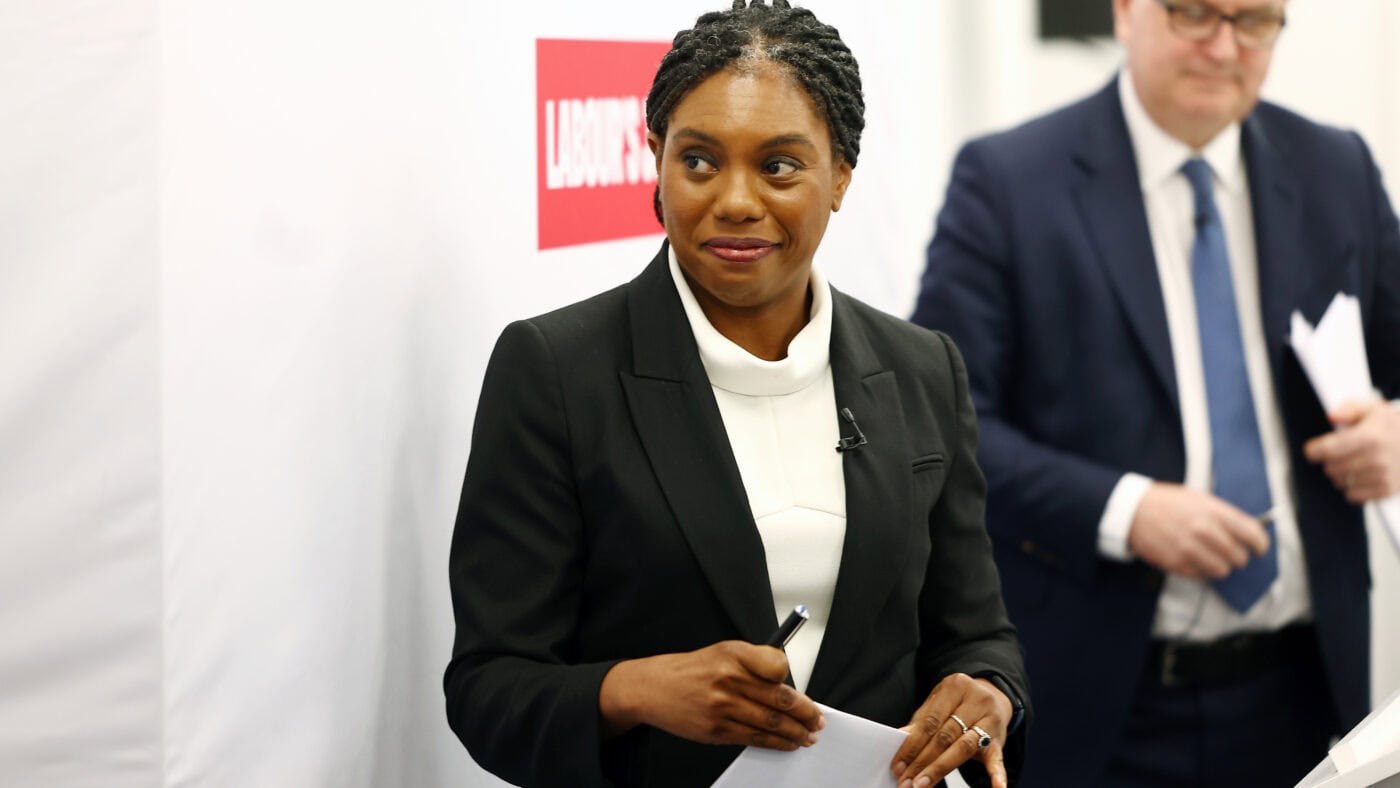Kemi Badenoch’s Net Zero intervention last month made plenty of political sense. The Tories face a threat from Reform, and the Net Zero consensus was part of the reason why. With the anti-establishment wave showing no signs of receding, Badenoch needed to try and protect the party’s right flank – dropping the commitment to Net Zero by 2050 helps do that.
In terms of the Conservatives challenging Labour, Net Zero – a legal commitment to a 100% reduction in greenhouse gas emissions by 2050 from a 1990 baseline – remained as an obvious point of vulnerability after Keir Starmer tacked to the Right on health and welfare. Economic constraints suggest he will continue to govern from the centre. Yet, as Tony Blair warned this week, Labour will lose public support (and swing-seat votes) if in these hard times they prioritise reducing carbon emissions over cheap energy.
That critical trade-off, however, is rejected by Net Zero advocates. Indeed, they say the converse is true: transitioning from fossil fuels will produce savings because renewables are not just clean but cheap and efficient. They therefore slammed Badenoch’s claim that the policy would involve ‘catastrophic costs’.
For example, Simon Evans at Carbon Brief, in an extensive ‘factcheck’ of her speech, described Net Zero as ‘affordable’. To corroborate this, he cited a report by the National Energy System Operator (NESO), which runs our energy grids, that states innovation, electrification and the right policies and public response can produce efficiency savings – mainly from better building insulation plus EVs and heat pumps, which use much less energy than fossil fuel alternatives. This will reduce UK energy consumption by more than a third come mid-century.
NESO didn’t price Net Zero, but the Climate Change Committee, which advises the Government, said in February it will cost around 0.2% of GDP per year, several billion pounds less than the UK annually spends on foreign aid. The committee expects businesses to provide much of the ‘investment upfront’ that will pave the way for ‘significant savings’.
In The Guardian, as she parsed Badenoch’s ‘ridiculous’ claim that pursuing Net Zero means falling living standards, columnist Zoe Williams employed ad hominem, arguing the Tory leader ‘has no expertise in climate science, no background in renewables or apparent familiarity with the advances made in their technology, no qualification in economics’.
The problem for the critics is that it is tricky to support their own view that energy prices will fall alongside emissions.
One fundamental reason for this is that there will always be considerable uncertainty when modelling energy markets. It simply isn’t feasible to accurately predict the political, technological and economic developments – and the interplay between them – that will determine future emissions and energy price trends. As the Treasury summarised in a 2021 Net Zero spending review: ‘It is not possible to forecast how individual households will be affected over the course of an economic transition that is expected to take thirty years to complete’.
Such realities call for caution. And even when we zoom in, fuzziness remains.
In her column, Williams rightly highlights innovation, which includes recent solar panel cost reductions so dramatic that US technologist Casey Handmer asks how ‘humanity will productively dispose of this imminent cornucopia of cheap, high grade energy?’ More prosaically, even Badenoch said in her speech that renewables ‘make energy cheaper’.
That, however, is by no means the whole story.
The nub is whether wind and solar’s lowered costs, free fuel and greater efficiency – from, for example, not having to heat water to turn turbines – outweigh the burden of catering for their intermittency. This leads to the critical question of whether batteries and other forms of energy storage can cost-effectively ensure the reliability of a renewables-dominated grid.
As with most complex issues, there’s expert debate on this. Possibly in recognition of that, Badenoch tried to have it both ways, suggesting that renewables increase energy costs because a back-up is needed, even as she said they lower them.
Daan Walter from Ember, a think tank, responded that her parallel systems claim is fallacious because, for example, adding solar and batteries alongside gas can reduce costs due to the lower fuel bill. ‘Renewables are now so incredibly cheap that their total cost (capital plus operating expenses) isn’t just lower than building and running a new fossil-fuel plant—it’s even cheaper than running an existing fossil plant.’
A contrasting view comes from Doug Sheridan at Energy Point Research. He found that a photovoltaic installation is price competitive in idealised conditions but not when realistic considerations are factored in, such as suboptimal weather, capital costs, battery wear and tear and operation and maintenance fees. Solar ‘dazzles at first glance. But a deeper and real-world look reveals serious cracks in its story’, Sheridan believes.
Others point out that while wind turbine, solar panel and battery prices have plummeted, they are only one component in renewable systems – and the prices of others have risen. Also important is that the costs of having enough storage to all-but prevent blackouts increase dramatically as renewables’ grid share increases.
While these are conversations about the future, there’s also dispute over the recent past. Many blame expensive gas for surging energy prices, in contrast with the very low cost of generating wind and solar power once plants are up and running. But the intermittency-storage issue means gas will still be required to balance supply and demand for the foreseeable. Therefore, under current arrangements, it will continue to often set the market price, and system costs will include the burden of keeping gas plants on standby. Other elements include carbon capture and storage technologies and hydrogen plans, but these are still maturing. Then there is the required grid upgrade, which will add to our bills, or public debt.
The debates will rage on, especially while front lines remain manned by energy modellers not grid engineers. The point here is not to try and adjudicate but to show that Badenoch’s repositioning is hardly as unreasonable as some critics claim.
For Net Zero-by-2050 advocates – not to mention Clean Power 2030, the Government’s ambitious expedited plan – the breakdown of the consensus is bad news. This is because, by their own admission, hitting the targets requires lots of fluid, fiddly, fickle things to fall into place. This very much includes domestic politics to ensure policies are consistently pursued. Badenoch breaking ranks makes such continuity less likely.
Overall, the weaknesses of the idealistic approach given the context are glaring. The UK is divided and volatile. Energy prices are high, as are interest rates. Living standards are being squeezed. The prospects for sustained high public or private investment appear bleak as even a new Labour Government with a large majority focuses on belt tightening. Delivering infrastructure remains expensive and slow.
This isn’t doom-mongering – it’s where the UK, sadly, finds itself, and it brings into sharp focus Ed Miliband’s ratcheting up of Net Zero plans with the aim to 95% decarbonise the grid in less than five years’ time. Given all the uncertainties, superficial efforts to shore up optimistic Government cost estimates and timeframes seem ill-advised—not least as they are likely to present an increasing opportunity for Badenoch and Labour’s future political opponents.
Click here to subscribe to our daily briefing – the best pieces from CapX and across the web.
CapX depends on the generosity of its readers. If you value what we do, please consider making a donation.


